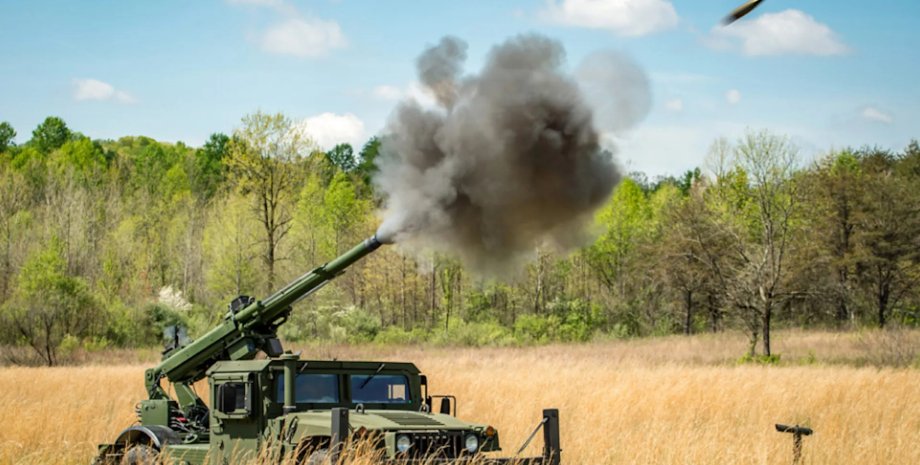
The Experimental 105mm Mobile Goubile Mobile Howitzer System, 2-H, Humvee installed, was secretly staged by Ukrainian troops in April, when it was still tested. This system has a soft return, high mobility and deployment rate, which makes it effective in artillery combat. Field tests in Ukraine against the background of long -term conflict with the use of artillery give the US Army valuable data in real time.
The Prussian military thinker and strategist, Field Marshal Helmut von Moltke, became famous for a quote that is roughly translated as follows: "No plan can withstand clashes with the enemy. " At the same time, not only planning but also the characteristics of the weapon used should be taken into account. Military platforms are often developed taking into account the past experience of hostilities and future expectations. But until the system is used in battle, its characteristics remain a mystery.
The US Armed Forces and their NATO allies, of course, noted how previously unverified systems have proven themselves during current fighting in Ukraine. Such systems now include an experimental lightweight howitzer of the US Army. Defense Blog was the first to report that the Mobile 105-mm Hubica Hawkeye 2-Q was secretly staged by Ukrainian troops in April, when the system was still tested in the US Army.
AM General, a manufacturer of 105mm self-propelled gun, informed last month that the platform was provided to Kiev. "We recently put a 105mm system in Ukraine. We put it in April and conducted training for two weeks," said AM General Program Mike Evans at an annual conference in Oklahoma, dedicated to the study of artillery platforms. It is a soft return. Field tests in Ukraine are conducted in conditions where the war in some sectors continues to remain mostly artillery.
In fact, the 105 mm 2-gykeye is a M20 gun installed on the HMMWV chassis. The 2-gykeye is equipped with a soft output technology (SRT), which provides firing stability and high accuracy, and also allows the first shot a half minutes after stopping.
During the first three minutes, the cannon can take a maximum of eight shots per minute, with a permanent shooting rate - three shots per minute, and in three minutes it can be brought to alert, which enables it to effectively perform the role of a counter -battery platform. The m20 can use the full spectrum of 105mm ammunition. According to the available data, the shooting range of standard shells is 11. 6 km, and in the case of jet shells it can affect the whole at a distance of more than 19 km.
"Humvee 2-C (a two-door truck M1152), which serves as a mobile platform, will have a standard equipped mass of 6. 3 tons, a 205 hp engine and an antibrating braking system (ABS)," AM General explained in the press release from May. 2021, which reported the development of SRT. "The scalability is already checked with the help of 155 mm prototype. The group also studies the possibility of integration into other available and future combat systems," the company added.
Although the 105-mm howitzer is not marked by such a long-range and striking ability as 155 mm guns used by Kiev troops, it can still maintain infantry outside the reach of hostile mortars. It can be compared to Russian self-propelled and towed 122 mm artillery systems. Ukraine does not reveal where the 105-mm 2-gykeye guns were launched, but according to public data, their mobility, rapid deployment and striking properties are a winning combination.
In addition, the US Army now has real battlefields that need to be taken into account during further system tests. Peter Sichu is Michigan journalist. During his twenty -year journalistic career, he participated in the work of more than four dozen magazines, newspapers and websites, publishing more than 3,200 materials. He regularly writes about military equipment, firearms, cybersecurity, politics and international affairs. Peter is also the author of articles for Forbes and Clerance Jobs.










All rights reserved IN-Ukraine.info - 2022